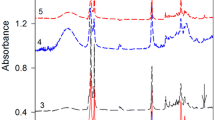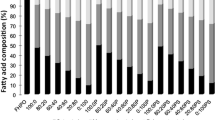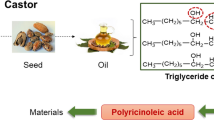Abstract
The graininess, which develops at 27C (80F) in lard shortening which has not undergone interesterification, is due to large crystal aggregates of disaturated 2-palmitoyloleoylstearin (OPS) of intermediate melting level and existing in a β'-type form of triple-chain-length structure. This β'-3 phase exists in ordinary lard accompanied by the commonly reported β phase which is largely due to trisaturated glycerides. Random interesterification eliminates graininess, not by reducing the disaturated content which remains about the same, but by reducing OPS to its “random” proportion and producing a mixture of disaturated glycerides, which is substantially lower melting than the original OPS. The resulting product crystallizes typically in a β'-2 form, characteristic of hydrogenated vegetable oil shortenings. (Directed interesterification actually reduces disaturated content as well as graininess, while simultaneously creating trisaturated “hardstock.”)
Similar content being viewed by others
References
Bailey, A. E., “Industrial Oil and Fat Products” Interscience Publishers, Inc., New York (1945), p. 682.
Norris, F. A., and K. F. Mattil, JAOCS,24, 274 (1947).
Hawley, H. K., and G. W. Holman,Ibid.,,33, 29 (1956).
Placek, C., and G. W. Holman, Ind. Eng. Chem.,49, 162 (1957).
Eckey, E. W., U. S. Paten 2,442,532 (1948).
Vander Wal, R. J., and L. A. Van Akkeren, U. S. Patent 2,571, 315 (1951).
Mattil, K. F., and F. A. Norris, U. S. Patent 2,265,478 (1953).
Holman, G. W., and L. H. Going, U. S. Patent 2,875,066 (1959).
Holman, G. W., and L. H. Going, U. S. Patent 2,875,067 (1959).
Hoerr, C. W., and D. F. waugh, JAOCS,32, 37 (1955).
Quimby, O. T., R. L. Wille, and E. S. Lutton,Ibid.,,30, 186 (1953).
Riemenschneider, R. W., F. E. Luddy, M. L. Schwain, and W. C. Ault,Ibid.,,23, 276 (1946).
Hilditch, T. P., and W. J. Stainsby, Biochem.,25, 1954 (1931).
Mattson, F. H., and E. S. Lutton, J. Biol. Chem.,233, 868 (1958).
Fulton, N. D., E. S. Lutton, and R. L. Wille, JAOCS,31, 98 (1954).
Lutton, E. S., J. Am. Chem. Soc.,73, 5595 (1951).
Lutton, E. S., JAOCS,27, 276 (1950).
Author information
Authors and Affiliations
About this article
Cite this article
Lutton, E.S., Mallery, M.F. & Burgers, J. Interesterification of lard. J Am Oil Chem Soc 39, 233–235 (1962). https://doi.org/10.1007/BF02631698
Received:
Issue Date:
DOI: https://doi.org/10.1007/BF02631698




